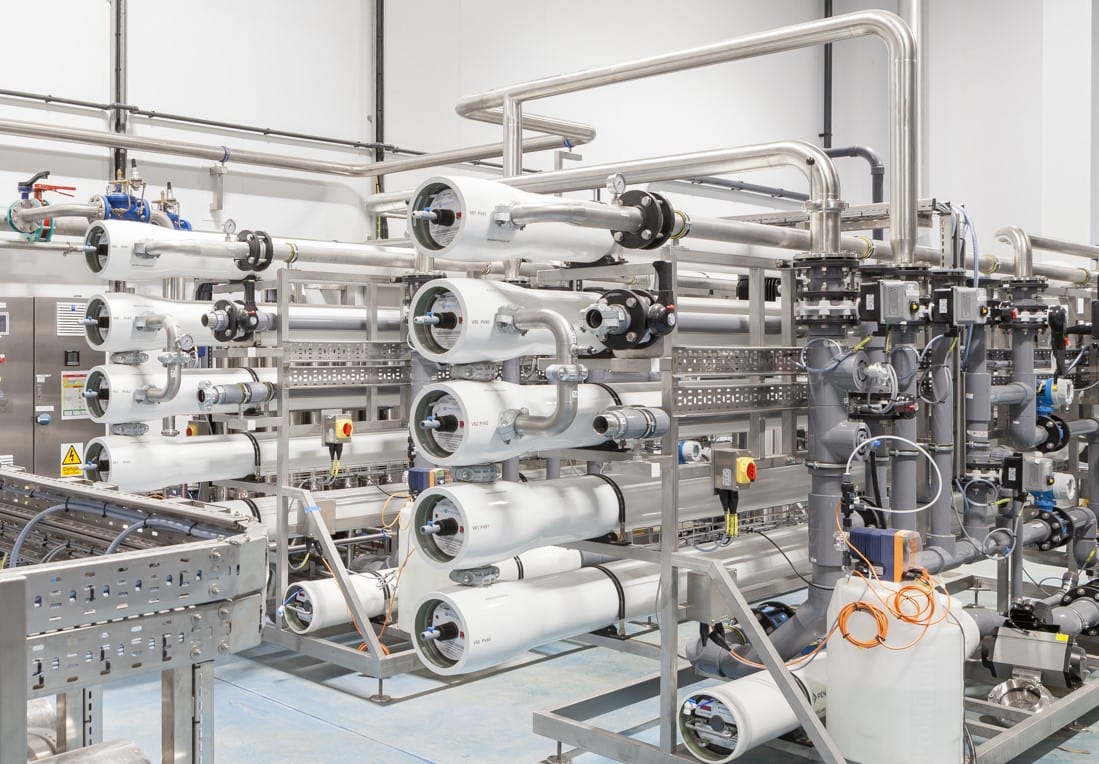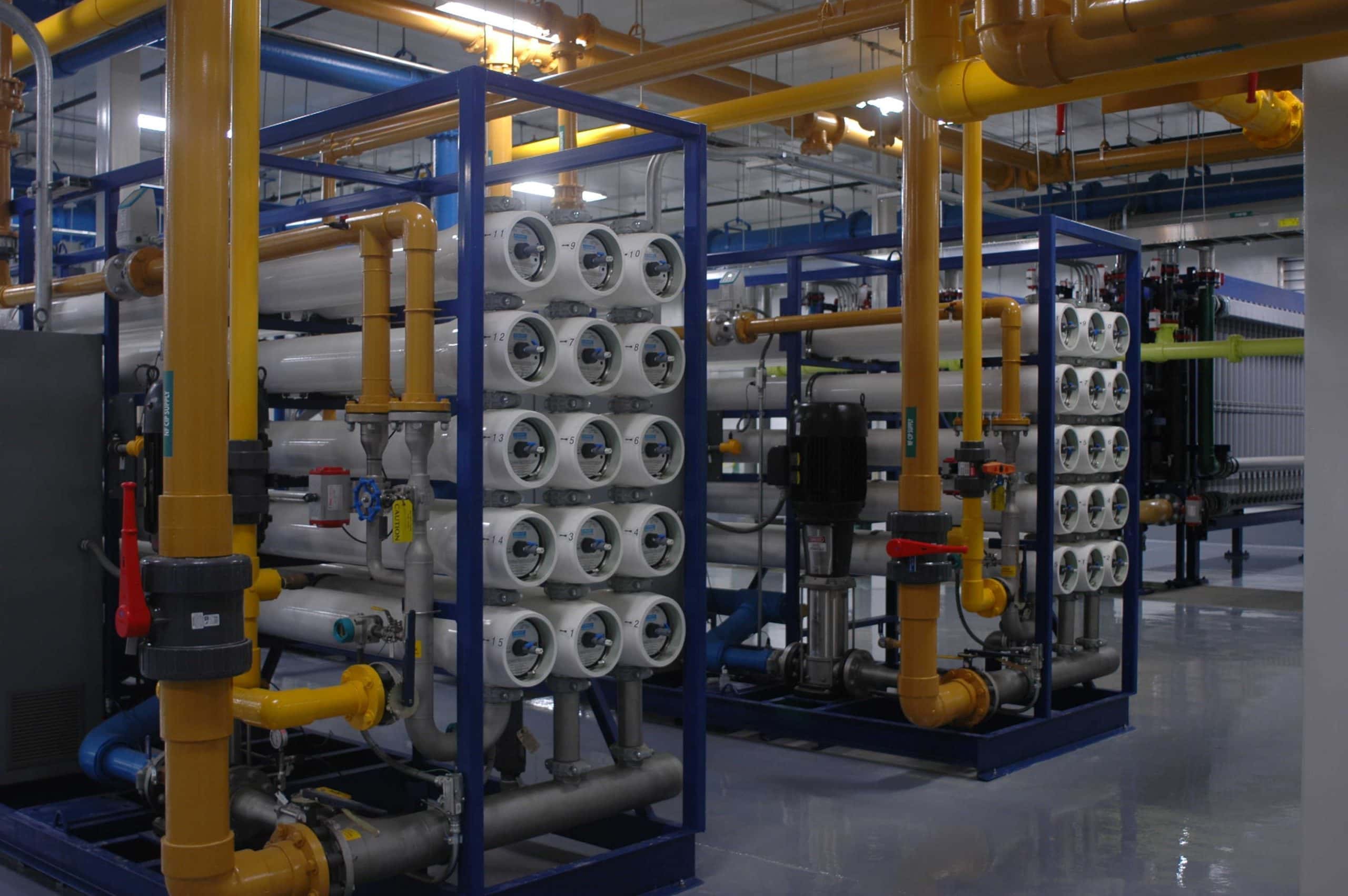KlarAid* lowers SDIs for power plant’s RO system, reduces overall operating expenses
 Background
A large southeast power station treats river water for boiler water makeup by removing influent turbidity in a lamella clarifier/sand filter pretreatment system prior to removing dissolved ions by reverse osmosis (RO). Historically, the plant has used a cationic coagulant blend fed at approximately 30 ppm (mg/L). This has resulted in filter effluent turbidity of 1 to 2 NTU. However, silt density index (SDI) readings, an indication of the quantity of colloidal and particulate matter remaining after pretreatment, have historically ranged from 2.6 to 3.2. In addition, there was a growing concern over the quantity of sludge generated with this program and rising disposal costs. With the installation of a new RO system a few years ago, this plant began looking at the issue of sludge disposal. In addition, plant workers were concerned with the degree to which the thin film composite membranes were becoming fouled, as a result of continuing to operate at these SDI levels. The cumulative colloidal loading threatened to significantly reduce the membranes’ serviceable life and to limit the plant’s overall throughput. Attempts to replace the existing coagulant program, first with an alum/polymer blend and then with a ferric chloride solution, failed to provide any reduction in SDI levels, although ferric treatment did produce reliable turbidity removal. In addition, ferric fed at its optimal dosage of 50 to 60 ppm (mg/L) resulted in a massive buildup of sludge and an increasing frequency of filter backwash as a result of carryover and post precipitation.
Background
A large southeast power station treats river water for boiler water makeup by removing influent turbidity in a lamella clarifier/sand filter pretreatment system prior to removing dissolved ions by reverse osmosis (RO). Historically, the plant has used a cationic coagulant blend fed at approximately 30 ppm (mg/L). This has resulted in filter effluent turbidity of 1 to 2 NTU. However, silt density index (SDI) readings, an indication of the quantity of colloidal and particulate matter remaining after pretreatment, have historically ranged from 2.6 to 3.2. In addition, there was a growing concern over the quantity of sludge generated with this program and rising disposal costs. With the installation of a new RO system a few years ago, this plant began looking at the issue of sludge disposal. In addition, plant workers were concerned with the degree to which the thin film composite membranes were becoming fouled, as a result of continuing to operate at these SDI levels. The cumulative colloidal loading threatened to significantly reduce the membranes’ serviceable life and to limit the plant’s overall throughput. Attempts to replace the existing coagulant program, first with an alum/polymer blend and then with a ferric chloride solution, failed to provide any reduction in SDI levels, although ferric treatment did produce reliable turbidity removal. In addition, ferric fed at its optimal dosage of 50 to 60 ppm (mg/L) resulted in a massive buildup of sludge and an increasing frequency of filter backwash as a result of carryover and post precipitation.
Solution A specialized KlarAid coagulant blend of inorganic and organic polymers was substituted for the existing coagulant blend at 20% of the feedrate. Flocculant feed decreased from close to 1 ppm (mg/L) to approximately 0.4 to 0.5 ppm (mg/L). KlarAid produced exceptionally low filter effluent turbidities (1 to 1.2 NTU) over a wide range of operating flows and raw water turbidities. More impressively, the SDI levels dropped to approximately 1.65, or roughly half of the best achievable result from any program prior to KlarAid
Results: This power station benefited in many ways by switching to a KlarAid program. The impressive results of KlarAid, compared with ferric chloride eliminate the need for pH adjustment. While keeping chemical treatment costs virtually the same, KlarAid lowers concern over increasing sludge disposal costs and the handling of hazardous chemicals.
- Reduced solids loading on the filters has resulted in significantly fewer backwashes and lower overall water use.
- Significantly lower colloidal solids loading on RO membranes is expected to save on maintenance costs, extend their critical service life and elevate performance between periodic cleanings.
- Reduced sludge volume and better settling in the lamella clarifier have increased efficiency of solids removal from the pretreatment system.
We offer a quality range of RO Membranes for Reverse Osmosis Plants, which are used to remove pesticides, contamination and even dissolved salts from the water through reverse osmosis method. Because we can customize absolutely everything to the customer’s water chemistry and operating conditions, a unit supplied to one customer is significantly different from another customer. Our industrial Reverse osmosis Plant is widely acknowledged as it is simple to operate, easy to maintain, automatic operation, has compact properties and is available at a competitively affordable price. We are capable of producing the best products for the Customers and can also customize them as per their specific requirements. We pack our all products in safe packaging ensuring their complete safety during transit and can also provide customized packaging facility if it is asked by our customers.
Reverse Osmosis System is used for treatment of water for reduction of high dissolved solids. The flow of the solvent is reversed by applying external pressure to the concentrated side. The concept is widely used to fresh water from any quality of water whether brackish or even seawater. The plants are either standard or custom built to suit regular and specific requirements of the customer. The packaged models are from 10 lph to higher flow to suit for domestic and higher flow for commercial & industrial applications. Water being an essential part of life sometimes contains high salt impurities and unwanted ions which can be removed through membrane technology with a membrane porosity of 0.0001 microns.
What is RO Membrane ?
This is one of the most efficient methods of water softening. A lot of processes are involved here, but the initial stage involves passing the water through a semipermeable membrane and other larger particles. Some of the particles from the hard water such as calcium and magnesium ions are removed in the osmotic membrane chamber. In this chamber, these ions are separate from the water, and this is possible because the membrane has very tiny holes which can only allow water molecules. A single solution is used for water softening and for water purification.

This therefore, means that only pure water will be allowed to pass through the membrane and that means that the water will have been softened. Reverse osmosis/Hyperfiltration completely removes contaminants and is one of the most used water purification processes around the world. In addition to water purification, the reverse osmosis process works in desalination of water, concentration of liquids and kidney dialysis.

How does a RO Membrane Works ?
Reverse osmosis works by forcing water through a membrane. RO Membranes play an important role in the production of Industrial Potable water. A water purification technology that uses a semipermeable membrane to remove ions, molecules and larger particles that are present in water. The Reverse osmosis uses an applied pressure to overcome osmotic pressure. A Reverse osmosis membrane removes all kinds of contaminants including bacteria. This aids in removing some chemicals from the water. This is the “reverse” in reverse osmosis, since the pressure is needed to reverse the natural process of osmosis.
According to the Water Quality Institute. Natural osmosis, the less concentrated water (purified) will move to water with greater concentrations of minerals, particles, etc., in order to dilute it.
Advantages of RO Membranes :
- It is the best method for water softening.
- No ion particles can be allowed to enter through
the semipermeable membrane. - Simple maintenance.
- Environment Friendly.
- They require a minimal amount of power.
- Reverse osmosis systems work well in home filtration systems because they are typically small in size.
- Taste of the purified water is another distinct advantage.
- Prevention of corrosion caused in Pipes and Motors.
Disadvantages of RO Membranes :
- A lot of energy is required for the whole process.
- Lot of pressure needed so that deionization can occur.
- The water becomes acidic because it has been deionised of all its mineral content.
- It is not advisable drinking water from the process because naturally, the water must possess some minerals which help in the functioning of the body.
- Reverse osmosis requires an enormous amount of water. And typically return as little as 5 to 15 percent.
Browse Our Products
Reverse osmosis is a very effective way of water softening and water purification
